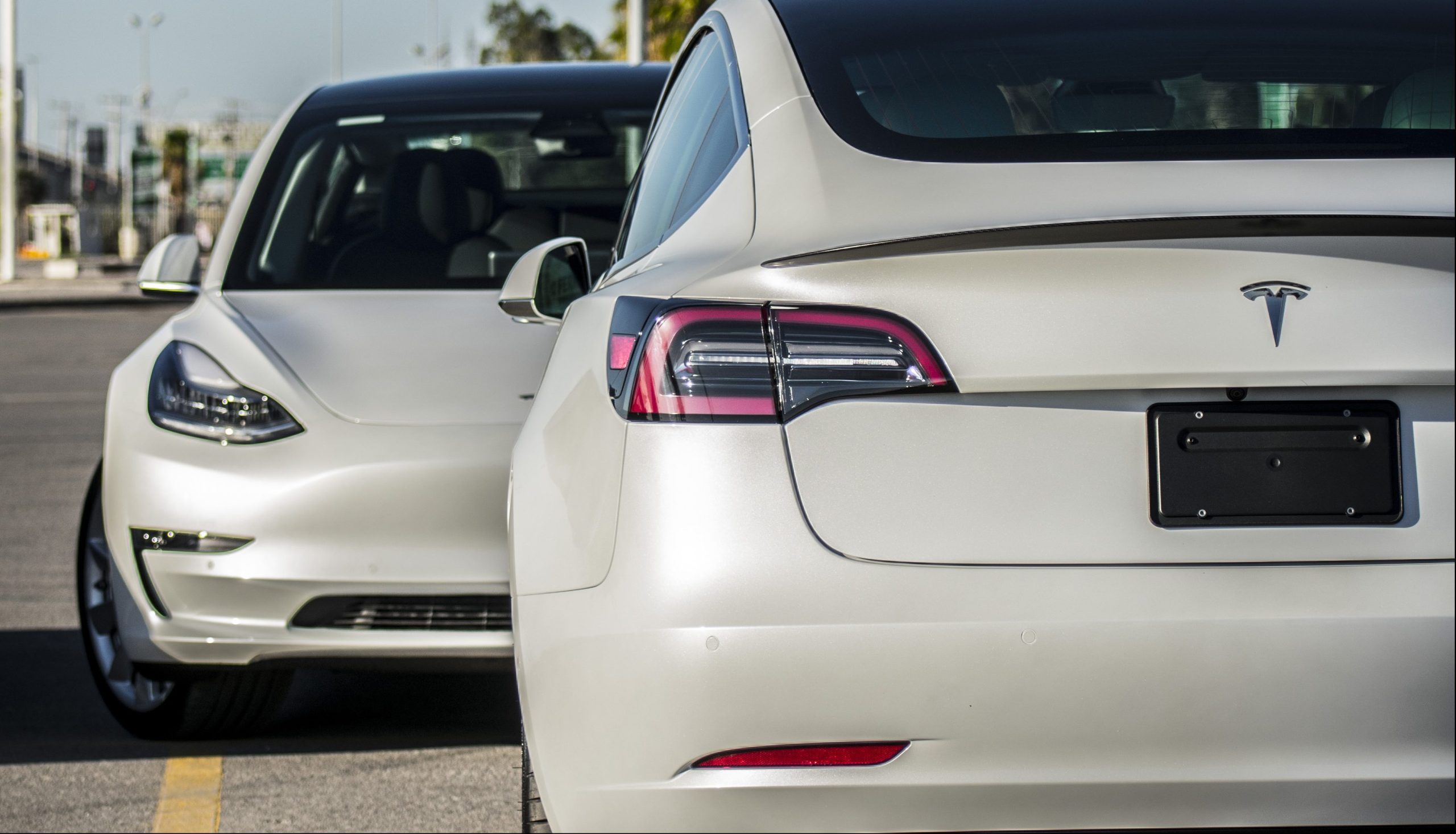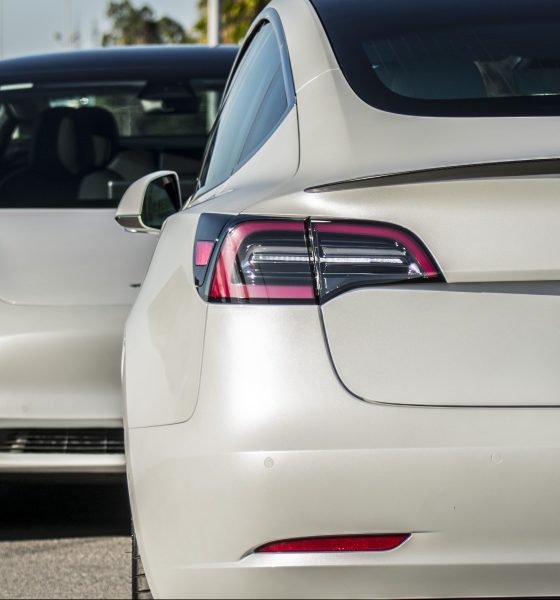A well-known Tesla hacker has released his thoughts about the recent claims of “Sudden Unintended Acceleration,” claiming that the company’s vehicles are not capable of gaining speed on their own.
Self-proclaimed “Tesla Tinkerer” Jason Hughes has been vocal about the company’s hardware issues in the past. Hughes has managed to make something of a career of recognizing flaws in Tesla vehicles and addressing ways to fix them. However, Hughes is not a believer in the new claims that Teslas will subject some owners to unexpected acceleration and has now publically dispelled them.
Hughes took to his Twitter account to address the rumors and claims they are simply an attempt to blame Tesla for mistakes the driver may have made, or an attempt to gain attention through the internet and gain traffic to a website. Hughes stated, “Seriously, Teslas do NOT have a sudden unintended acceleration issue. The engineering here is spot on. They have people not wanting to accept responsibility for their screw ups, plus clickbait.”
So the BS sudden unintended acceleration claims are front and center again… *sigh*
Seriously, Teslas do NOT have a sudden unintended acceleration issue. The engineering here is spot on.
They have people not wanting to accept responsibility for their screw ups, plus clickbait.
— Jason Hughes (@wk057) January 20, 2020
While Hughes states that he does not hold any TSLA stock, he is a supporter of the company. In the past, Hughes recognized issues with the MCUv1 hardware and brought them to light for Tesla owners to ponder. While he claims to have issues with some of the things Tesla has done with their vehicles, he fails to believe the company has issues with something that is as simple as a gas pedal.
In a post addressing the issues on the Tesla Motors Club forum, Hughes said, “Tesla’s accelerator pedal is actually the exact same drive-by-wire pedal used in several other manufacturer’s vehicles. It’s a highly proven technology over decades. Nothing special at this point. No Tesla secret sauce here. Just two hall effect sensors with slightly different curves for redundancy and position validation. If they don’t agree, the car doesn’t move.”
Hughes believes that any issues with sudden acceleration may be the fault of the driver. “I’ve almost made a pedal misapplication mistake several times in the past with multiple different vehicles… fortunately not in any catastrophic situation. We’re not infallible creatures. You get in a zone of habit, feel like you know what’s going on, and when something unexpected happens you’ll swear you were doing everything normally the way you’ve done it 10000 times before, when in reality you just screwed up. It happens,” he added on the TMC forum under his username wk057.
Tesla released an official statement on the Sudden Acceleration claims on Monday, January 20, and claimed they were completely false. Tesla has worked closely with the NHTSA to resolve any issues that come forward with its cars and all research and data have shown that the company’s vehicles accelerate in a proper fashion.
Hughes’ belief that Tesla’s vehicles are not capable of sudden acceleration is more credible than most claims. Hughes has spent years breaking down and finding issues with Teslas, but he simply finds no proof in the claim that the vehicles are randomly accelerating. “But in this case, Tesla did their homework on the hardware and software side very well to make sure this would never be an issue. Kudos where due,” he said.

Elon Musk
Elon Musk’s X will start using a Tesla-like software update strategy
The initiative seems designed to accelerate updates to the social media platform, while maintaining maximum transparency.

Elon Musk’s social media platform X will adopt a Tesla-esque approach to software updates for its algorithm.
The initiative seems designed to accelerate updates to the social media platform, while maintaining maximum transparency.
X’s updates to its updates
As per Musk in a post on X, the social media company will be making a new algorithm to determine what organic and advertising posts are recommended to users. These updates would then be repeated every four weeks.
“We will make the new 𝕏 algorithm, including all code used to determine what organic and advertising posts are recommended to users, open source in 7 days. This will be repeated every 4 weeks, with comprehensive developer notes, to help you understand what changed,” Musk wrote in his post.
The initiative somewhat mirrors Tesla’s over-the-air update model, where vehicle software is regularly refined and pushed to users with detailed release notes. This should allow users to better understand the details of X’s every update and foster a healthy feedback loop for the social media platform.
xAI and X
X, formerly Twitter, has been acquired by Elon Musk’s artificial intelligence startup, xAI last year. Since then, xAI has seen a rapid rise in valuation. Following the company’s the company’s upsized $20 billion Series E funding round, estimates now suggest that xAI is worth tens about $230 to $235 billion. That’s several times larger than Tesla when Elon Musk received his controversial 2018 CEO Performance Award.
As per xAI, the Series E funding round attracted a diverse group of investors, including Valor Equity Partners, Stepstone Group, Fidelity Management & Research Company, Qatar Investment Authority, MGX, and Baron Capital Group, among others. Strategic partners NVIDIA and Cisco Investments also continued support for building the world’s largest GPU clusters.
News
Tesla FSD Supervised wins MotorTrend’s Best Driver Assistance Award
The decision marks a notable reversal for the publication from prior years, with judges citing major real-world improvements that pushed Tesla’s latest FSD software ahead of every competing ADAS system.

Tesla’s Full Self-Driving (Supervised) system has been named the best driver-assistance technology on the market, earning top honors at the 2026 MotorTrend Best Tech Awards.
The decision marks a notable reversal for the publication from prior years, with judges citing major real-world improvements that pushed Tesla’s latest FSD software ahead of every competing ADAS system. And it wasn’t even close.
MotorTrend reverses course
MotorTrend awarded Tesla FSD (Supervised) its 2026 Best Tech Driver Assistance title after extensive testing of the latest v14 software. The publication acknowledged that it had previously criticized earlier versions of FSD for erratic behavior and near-miss incidents, ultimately favoring rivals such as GM’s Super Cruise in earlier evaluations.
According to MotorTrend, the newest iteration of FSD resolved many of those shortcomings. Testers said v14 showed far smoother behavior in complex urban scenarios, including unprotected left turns, traffic circles, emergency vehicles, and dense city streets. While the system still requires constant driver supervision, judges concluded that no other advanced driver-assistance system currently matches its breadth of capability.
Unlike rival systems that rely on combinations of cameras, radar, lidar, and mapped highways, Tesla’s FSD operates using a camera-only approach and is capable of driving on city streets, rural roads, and freeways. MotorTrend stated that pure utility, the ability to handle nearly all road types, ultimately separated FSD from competitors like Ford BlueCruise, GM Super Cruise, and BMW’s Highway Assistant.
High cost and high capability
MotorTrend also addressed FSD’s pricing, which remains significantly higher than rival systems. Tesla currently charges $8,000 for a one-time purchase or $99 per month for a subscription, compared with far lower upfront and subscription costs from other automakers. The publication noted that the premium is justified given FSD’s unmatched scope and continuous software evolution.
Safety remained a central focus of the evaluation. While testers reported collision-free operation over thousands of miles, they noted ongoing concerns around FSD’s configurable driving modes, including options that allow aggressive driving and speeds beyond posted limits. MotorTrend emphasized that, like all Level 2 systems, FSD still depends on a fully attentive human driver at all times.
Despite those caveats, the publication concluded that Tesla’s rapid software progress fundamentally reshaped the competitive landscape. For drivers seeking the most capable hands-on driver-assistance system available today, MotorTrend concluded Tesla FSD (Supervised) now stands alone at the top.
News
Elon Musk’s Grokipedia surges to 5.6M articles, almost 79% of English Wikipedia
The explosive growth marks a major milestone for the AI-powered online encyclopedia, which was launched by Elon Musk’s xAI just months ago.

Elon Musk’s Grokipedia has grown to an impressive 5,615,201 articles as of today, closing in on 79% of the English Wikipedia’s current total of 7,119,376 articles.
The explosive growth marks a major milestone for the AI-powered online encyclopedia, which was launched by Elon Musk’s xAI just months ago. Needless to say, it would only be a matter of time before Grokipedia exceeds English Wikipedia in sheer volume.
Grokipedia’s rapid growth
xAI’s vision for Grokipedia emphasizes neutrality, while Grok’s reasoning capabilities allow for fast drafting and fact-checking. When Elon Musk announced the initiative in late September 2025, he noted that Grokipedia would be an improvement to Wikipedia because it would be designed to avoid bias.
At the time, Musk noted that Grokipedia “is a necessary step towards the xAI goal of understanding the Universe.”
Grokipedia was launched in late October, and while xAI was careful to list it only as Version 0.1 at the time, the online encyclopedia immediately earned praise. Wikipedia co-founder Larry Sanger highlighted the project’s innovative approach, noting how it leverages AI to fill knowledge gaps and enable rapid updates. Netizens also observed how Grokipedia tends to present articles in a more objective manner compared to Wikipedia, which is edited by humans.
Elon Musk’s ambitious plans
With 5,615,201 total articles, Grokipedia has now grown to almost 79% of English Wikipedia’s article base. This is incredibly quick, though Grokipedia remains text-only for now. xAI, for its part, has now updated the online encyclopedia’s iteration to v0.2.
Elon Musk has shared bold ideas for Grokipedia, including sending a record of the entire knowledge base to space as part of xAI’s mission to preserve and expand human understanding. At some point, Musk stated that Grokipedia will be renamed to Encyclopedia Galactica, and it will be sent to the cosmos.
“When Grokipedia is good enough (long way to go), we will change the name to Encyclopedia Galactica. It will be an open source distillation of all knowledge, including audio, images and video. Join xAI to help build the sci-fi version of the Library of Alexandria!” Musk wrote, adding in a later post that “Copies will be etched in stone and sent to the Moon, Mars and beyond. This time, it will not be lost.”










